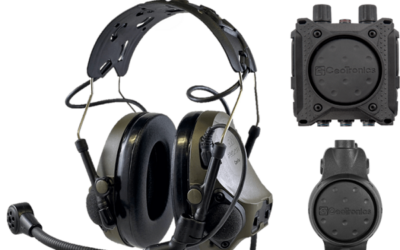A new in-depth report provides the most detailed appraisal yet of Russian Army ground-based air defence
Russian air defence is in the spotlight. The deployment of Ground-Based Air Defence (GBAD) assets to support the Russian presence in Ukraine and Syria has been in the headlines since these deployments commenced in 2014 and 2015. Interest in Russia’s GBAD has been punctuated by infamous incidents such as the downing of Malaysian Airlines flight MH17; a Boeing B777-200ER airliner en route from Amsterdam to Kuala Lumpur, believed to have been destroyed by a Russian Army Almaz-Antey 9K37 Buk-M2 (NATO reporting name ‘SA-17 Grizzly’) medium-range Surface-to-Air Missile (SAM) system on 17 June 2014 with the loss of all 298 souls onboard.
Likewise, the shoot down of a Türk Hava Kuvvetleri (Turkish Air Force) McDonnell Douglas RF-4E Phantom reconnaissance aircraft on 22 June 2012 by a Russian Air Force KBP 96K9 Pantsir-S1 (SA-22 Greyhound) combined AAA (Anti-Aircraft Artillery) and SAM system over the Syrian town of Latakia on the Mediterranean coast achieved similar notoriety. Nevertheless, remarkably little is known about the organisation, doctrine and modernisation plans of the Russian Army’s Ground Forces Air Defence Force, referred to herein as the PVO-SV. A new paper entitled Russia’s Integrated Air Defence Capabilities: Operational and Tactical Levels written by Roger McDermott, a senior fellow in Eurasian military studies at the Jamestown Foundation, a think tank in Washington DC, casts some much needed light on this fascinating subject.
Red Army GBAD
During the Cold War, the Soviet Union placed a major emphasis on ensuring that the Red Army possessed robust GBAD, particularly in the manoeuvre formations which would engage NATO land forces in the event of an east-west confrontation. A 1981 report entitled the Development of Soviet Air Defence: Doctrine and Practice published by the Historical Evaluation and Research Organisation of the Sandia National Laboratories based in California and New Mexico provides a detailed account of the then status of Red Army GBAD. For example, at that point in the Cold War, Red Army Motorised Rifle and Tank Regiments were thought to contain four batteries of MMZ ZSU-23-4 Shilka tracked AAA and the same number of batteries of KB Tochmash 9K31 Strela-1 (SA-9 Gaskin) self-propelled short-range SAM systems. Meanwhile motorised rifle and tank divisions would have either four Vympel/MMZ 2K12 Kub (SA-6 Gainful) or four Znamya Truda Plant 9K33 Osa (SA-8 Gecko) batteries of tracked and wheeled SAM systems. The report continued that, as far as Red Army doctrine was concerned, the primary role of ground forces’ GBAD was “to seek the destruction of (the enemy) military forces … and, at the same time, seek to prevent their own destruction.”
Red Army GBAD would be so arrayed to provide air defence at the army, division, regiment, battalion and company levels. The report added that “within the Army’s area of operations, air defence units are organised in belts or sectors roughly parallel to the forward edge of the battle area.” Even at the company level, air defence would be provided by KBM 9K32 Strela-2 (SA-7 Grail) Man-Portable Air Defence Systems (MANPADS) with these weapons operating under a so-called ‘free fire’ concept engaging any aircraft which came within their zone of engagement under the authority of the company commander. Beyond the 9K32 Strela-2s, motorised rifle and tank regiments would be protected by their organic ZSU-23-4 and 9K31 Strela-1 batteries placed either to the rear, on positioned on the flank, of the regiment’s advance, with an accompanying air defence battery command post. The 2K12 Kub and 9K33 Osa units would have been placed approximately five kilometres (2.7 miles) to ten kilometres (5.4 miles) behind the FEBA (Forward Edge of the Battle Area). Additional protection would be provided with the deployment of additional 9K33 units between 20km (10.5 miles) to 30km (16.2 miles) behind the FEBA covering rear areas, and the army’s logistics train. Unsurprisingly, these GBAD elements would have worked closely with the Soviet Air Force and their fighters which would have provided top cover against NATO SEAD (Suppression of Enemy Air Defence) assets, and Close Air Support/Battlefield Interdiction aircraft.
Similarities and Differences
Almost 30 years since the end of the Cold War, how does the Russian Army’s current GBAD posture differ from that of the Red Army? “At an organisational and structural level, it differs mainly in terms of air defence forces being absorbed into the relatively recent structure of the Aerospace Forces (Vozdushno Kosmicheskikh Sil/VKS). The Russian Air Force is also part of the VKS,” remarks Mr. McDermott. Unsurprisingly, technological advance has had an impact on Russian Army GBAD: “There are differences such as the introduction of automated systems, including automated C2 (Command and Control) and automated elements in the air defence assets.” This has resulted in the PVO-SV using technology as a force multiplier, particularly in the Electronic Warfare (EW) domain: “The key areas of progress, where air defence substantially differs from Soviet approaches is the extent to which these platforms are integrated with force enablers and force multipliers such as EW,” Mr. McDermott observes. It is instructive that the 1981 report cited above makes little mention of the role of EW in supporting Red Army GBAD whereas now if forms a key element of the PVO-SV’s approach (see below).
That said there are some doctrinal similarities between the Red Army and Russian Army GBAD postures: “The continuity, however, lies in the concepts of air defence ‘bubbles’ and layered or zonal air defence in order to avoid over dependence upon any one system,” Mr. McDermott states. In addition, the continued tight coordination of air force and GBAD assets remains, and has deepened yet further compared to the Red Army’s Cold War GBAD posture: “Due to automation and advances in integrating command and control, there is now more progress towards better coordination of such force elements … Depending on the specifics of the target and the operational environment the Ground Forces would anticipate VKS involvement in conducting zonal air defence.”
Russian Army GBAD Structure
Mr. McDermott’s report notes that the PVO-SV is tasked with protecting deployed manoeuvre forces against combat aircraft, surface-to-surface weapons such as cruise missiles and Unmanned Aerial Vehicles (UAVs) during combined operations. In addition to these duties, the PVO-SV provides the operational/theatre level ballistic missile defence of deployed forces. Mr. McDermott goes onto detail the order of battle of the PVO-SV, and the Russian military districts with which they are deployed. He stresses that the Russian Army has taken a holistic approach in protecting its deployed forces ensuring that targets can be engaged at altitudes and ranges of between 656.2 feet/ft (200 metres/m) and 5.4 nautical miles (ten kilometres/km), up to over 39,370ft (12,000m) and 54nm (100km) with the ability to engage targets travelling at different speeds. As Mr. McDermott notes, these targets can be engaged with a range of AAA, SAM and combined AAA/SAM platforms. Air defence is also reinforced with a robust ground-based EW force similarly deployed at the brigade level with each brigade equipping one of Russia’s military districts, something which Mr. McDermott has chronicled in detail in his report entitled Russia’s Electronic Warfare Capabilities to 2025: Challenging NATO in the Electromagnetic Spectrum published in September 2017 by Estonia’s International Centre for Defence and Security. These EW brigades are intended to jam hostile airborne radars and also weapons guidance mechanisms using the global positioning system, for example.
Often neglected in discussions of Russian GBAD capabilities, Mr. McDermott provides an interesting overview of the PVO-SV’s C2 elements. These include the Roselektronika 9S52M1 Polyana-D4MI C2 system which is used at the brigade level, and the 83M6E and 9S737M C2 systems used by individual batteries. Yet this is just a small example of the detailed discussion of Russian Army operational and tactical level GBAD. Also interesting is the author’s discussion of the ‘kinetics’ which are deployed by the PVO-SV notably the Almaz-Antey S-300V3/4 long-range SAM system (SA-10 Grumble), alongside the 9K37 Buk-M2, Almaz-Antey 9K330 (SA-15 Gauntlet) medium/low-altitude SAM, 9K33 Osa-AKM, KBP 2K22 Tunguska (SA-19 Grisson) short-range combined SAM/AAA platform and KBP 9K38 Igla (NATO reporting name SA-18 Grouse) family of MANPADS.
Future Plans
Mr. McDermott’s report also includes a detailed discussion of the ground-based air surveillance and fire control radars supporting the PVO-SV’s kinetic assets, and the force’s modernisation priorities writ large as regards weaponry and sensors, providing a comprehensive examination of their capabilities, plans for deployment and place in Russian Army air defence doctrine. In terms of modernisation, Mr. McDermott notes that questions still remain in some areas. For example, the 2K22 is scheduled to be replaced in Russian Army service with a new system which can be used for the engagement of short-range, low-altitude targets with the 96K9 Pantsir combined AAA/SAM family of platforms as one potential candidate. In early January a 96K9 Pantsir-S deployed by the Russian Air Force to help protect its presence at Khmeimim airbase on Syria’s northern Mediterranean coast was reported to have shot down seven of the 13 UAVs thought to have been launched by ISIS (Islamic State of Iraq and Syria) to attack the base. Mr. McDermott continues that while some reports state that the 96K9 Pantsir-S1 is the favourite system to satisfy this requirement, others have stated that the Russian Army will procure a new combined AAA/SAM system outfitted with a 57mm autocannon. At the operational level, beyond the Almaz-Antey S-400 (SA-21 Growler) SAM batteries which are being rolled out across Russia’s military districts, and which have also been deployed to Syria, the Russian Army is contemplating the Almaz-Antey S-500 high-altitude SAM system which is currently under development. This weapon system could represent an important enhancement for Russian GBAD with the reported capability to intercept intercontinental ballistic missiles and hypersonic cruise missiles, alongside conventional air-breathing threats. Mr. McDermott believes that the S-500 could enter service from 2027.
Summarising the prevailing trends in the ADF, Mr. McDermott states that the force is focussing on the replacement of older, legacy GBAD systems with either new, or upgraded weaponry and platforms, and is “gradually phasing out the Soviet era air defence assets.” Furthermore, the force is focused on achieving “greater range and accuracy coupled with unifying such systems into automated C2 to greatly enhance speed and decision-making.” At the same time, he notes that it is folding back lessons learned from its deployment in support of Russian military efforts in the Syrian and Ukrainian theatres into its doctrine. Importantly, Mr. McDermott details several trends of interest to NATO policy makers, and the Alliance’s armed forces alike regarding the development of the PVO-SV. These include plans to continue the deep integration of PVO-SV assets with ground forces, GBAD capabilities, the continued enhancement of PVO-SV C2 allied to the increasing integration of the force into Russian military operations writ large.
Doctrinally, Mr. McDermott told the author that the Russian Army may well take lessons from its deployments to Syria and Ukraine regarding UAVs: “Most likely the experiences offer valuable insight into how and when to counter enemy UAVs, which is an area of high interest for Russia’s General Staff.” Nonetheless he cautions that the Russian GBAD experience in both theatres must be seen in light of the missions that it performed: “(The Russian Army is) satisfied with the air defence deployments to offer base and force protection in Syria,” although the force is aware that “these have not been tested by a high technology adversary.” To borrow an oft-repeated phrase from the US and NATO defence communities, Russian Army GBAD is yet to battle a ‘near peer’ adversary.
This article provides just a short overview of Mr. McDermott’s report. Those readers wishing to read it in full should visit this link.

























